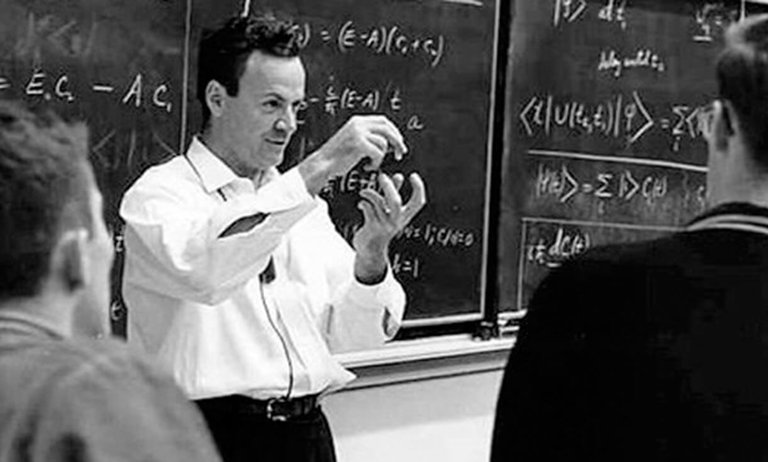
You can train your brain to think better. One of the best ways to do this is to expand the set of mental models you use to think. Let me explain what I mean by sharing a story about a world-class thinker.
I first discovered what a mental model was and how useful the right one could be while I was reading a story about Richard Feynman, the famous physicist. Feynman received his undergraduate degree from MIT and his Ph.D. from Princeton. During that time, he developed a reputation for waltzing into the math department and solving problems that the brilliant Ph.D. students couldn’t solve.
When people asked how he did it, Feynman claimed that his secret weapon was not his intelligence, but rather a strategy he learned in high school. According to Feynman, his high school physics teacher asked him to stay after class one day and gave him a challenge.
“Feynman,” the teacher said, “you talk too much and you make too much noise. I know why. You’re bored. So I’m going to give you a book. You go up there in the back, in the corner, and study this book, and when you know everything that’s in this book, you can talk again.”
So each day, Feynman would hide in the back of the classroom and study the book—Advanced Calculus by Woods—while the rest of the class continued with their regular lessons. And it was while studying this old calculus textbook that Feynman began to develop his own set of mental models.
“That book showed how to differentiate parameters under the integral sign,” Feynman wrote. “It turns out that’s not taught very much in the universities; they don’t emphasize it. But I caught on how to use that method, and I used that one damn tool again and again. So because I was self-taught using that book, I had peculiar methods of doing integrals.”
“The result was, when the guys at MIT or Princeton had trouble doing a certain integral, it was because they couldn’t do it with the standard methods they had learned in school. If it was a contour integration, they would have found it; if it was a simple series expansion, they would have found it. Then I come along and try differentiating under the integral sign, and often it worked. So I got a great reputation for doing integrals, only because my box of tools was different from everybody else’s, and they had tried all their tools on it before giving the problem to me.”
Every Ph.D. student at Princeton and MIT is brilliant. What separated Feynman from his peers wasn't necessarily raw intelligence. It was the way he saw the problem. He had a broader set of mental models.
Richard Feynman teaching some of his mental models to physics students.
Richard Feynman teaching some of his mental models to physics students.
What is a Mental Model?
A mental model is an explanation of how something works. It is a concept, framework, or worldview that you carry around in your mind to help you interpret the world and understand the relationship between things. Mental models are deeply held beliefs about how the world works.
For example, supply and demand is a mental model that helps you understand how the economy works. Game theory is a mental model that helps you understand how relationships and trust work. Entropy is a mental model that helps you understand how disorder and decay work.
Mental models guide your perception and behavior. They are the thinking tools that you use to understand life, make decisions, and solve problems. Learning a new mental model gives you a new way to see the world—like Richard Feynman learning a new math technique.
Mental models are imperfect, but useful. There is no single mental model from physics or engineering, for example, that provides a flawless explanation of the entire universe, but the best mental models from those disciplines have allowed us to build bridges and roads, develop new technologies, and even travel to outer space. As historian Yuval Noah Harari puts it, “Scientists generally agree that no theory is 100 percent correct. Thus, the real test of knowledge is not truth, but utility.”
The best mental models are the ideas with the most utility. They are broadly useful in daily life. Understanding these concepts will help you make wiser choices and take better actions. This is why developing a broad base of mental models is critical for anyone interested in thinking clearly, rationally, and effectively.
Really good overview, but wishing for more models now. I find this interesting, as I believe the jack of all trades approach is the best way to go about life.